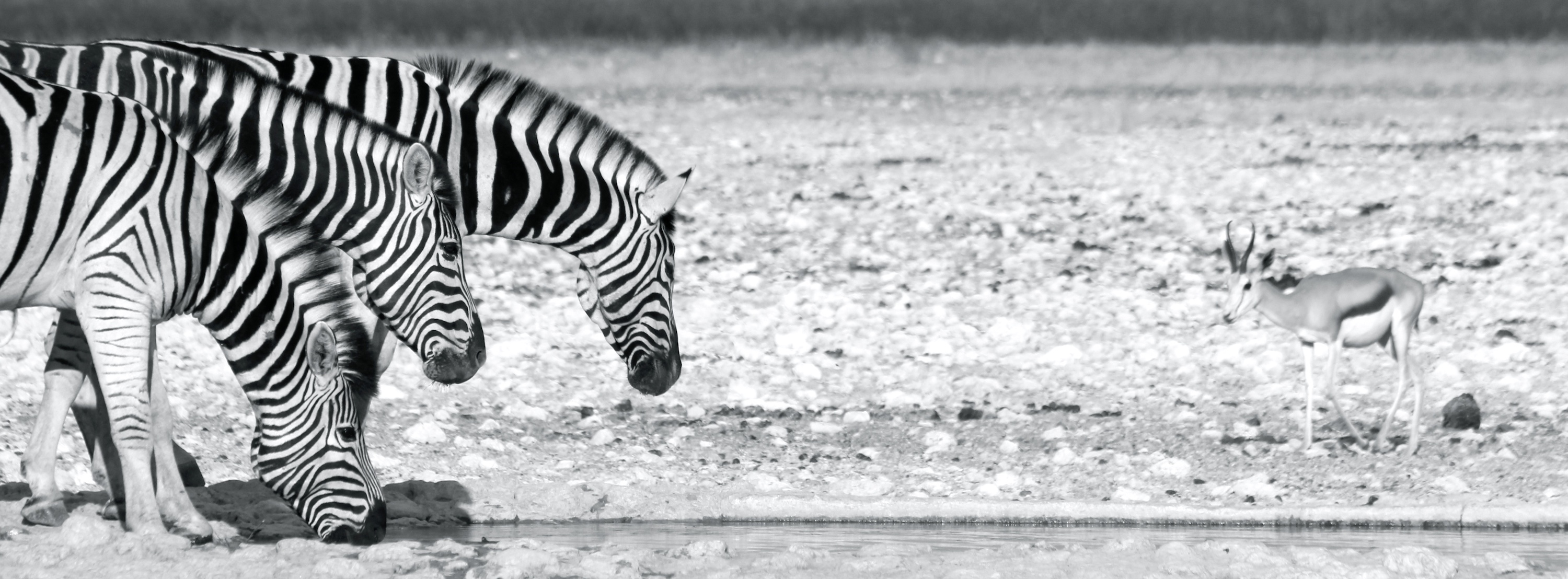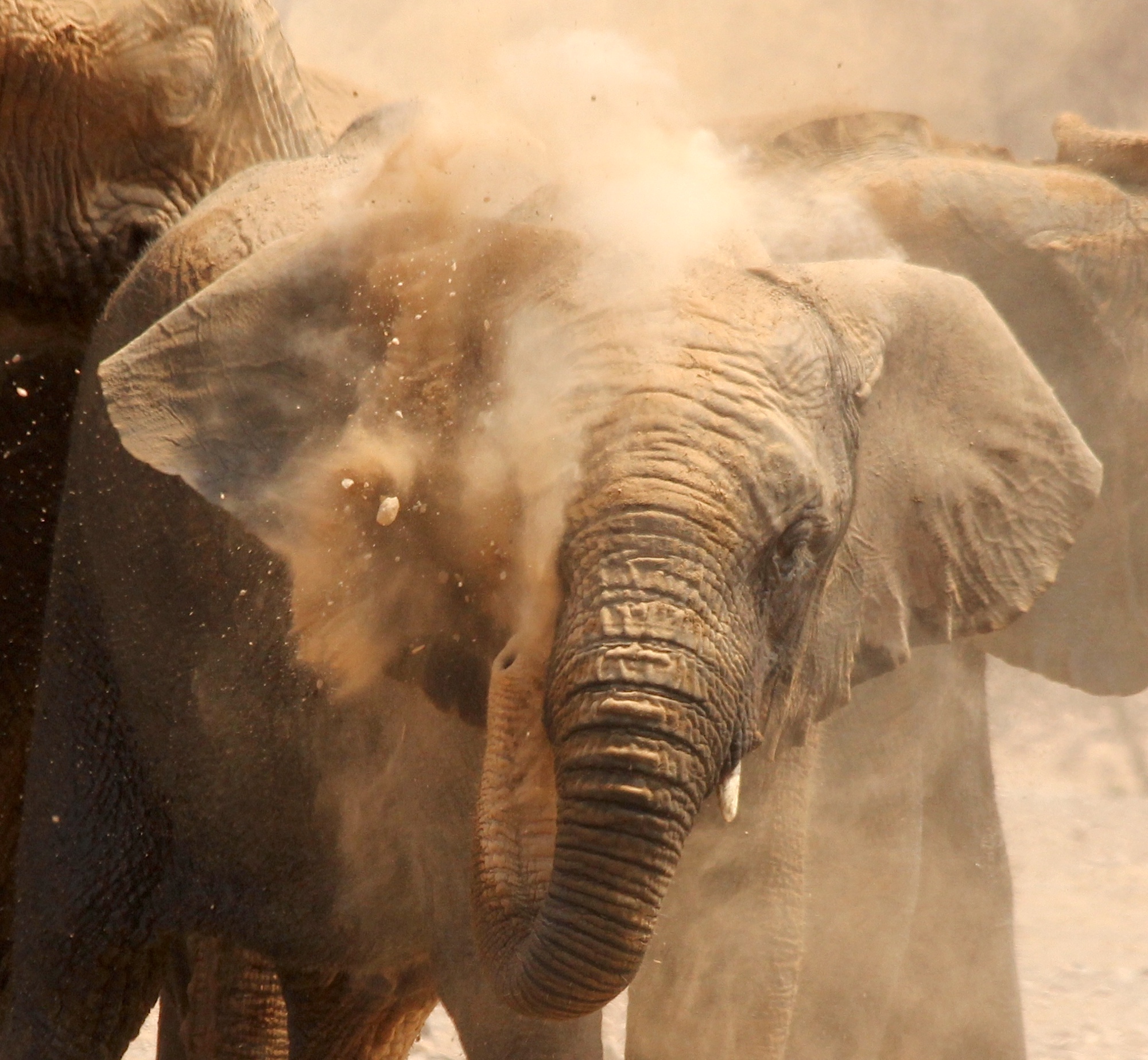
NCE Supports
Advocacy for sustainable use and Namibia's wildlife economy
30th November 2023
30th November 2023
One of the many functions of the Namibian Chamber of Environment (NCE) is to provide a voice for the environmental sector vis-à-vis policy and lawmakers in Namibia and beyond. The ultimate purpose of our advocacy work is to conserve the natural environment. We believe that an important means to that end is to uphold the principle of sustainable use found in Namibia's constitution, and to address internal and external policy threats to this principle.
Since human beings have to use natural resources to survive, the alternative to sustainable use is unsustainable use, with the very real risk that species go extinct and ecosystems break down. Even when the use of a species is declared illegal, illegal use will nevertheless abound if it comes with the potential for high rewards (e.g. selling rhino horn on the black market). Limiting illegal use to sustainable levels is far more difficult and resource intensive than regulating legal use for sustainability, especially for widespread species that are difficult to protect.
Banning legal use and protecting individual plants and animals only makes sense when there are so few left that any level of use could lead to extinction. In cases where population numbers and natural growth rates allow limited off-take, legalising and regulating use is the most effective means of conserving that species. Why is it effective? As we stated in the foreword to this year's magazine: whether or not a species goes extinct or proliferates is closely linked to how humans perceive that species. This is why domestic plants and animals that humans use legally for many different purposes are by far the most common species on the planet, while many plants and animals that are not owned and used sustainably are in danger.
Ensuring sustainable use involves applying normal human motivations to protect our own interests. Just like a shop owner takes steps to prevent shoplifting and a cattle farmer guards against stock theft, if people are given real ownership over valuable wildlife resources they will protect them from freeloaders and thieves.
In Namibia the Nature Conservation Ordinance 4 of 1975 (and its predecessor, Ordinance 31 of 1967) and its amendment in 1996 enabled people to own and manage wildlife under certain conditions. The attitude towards wildlife on private and communal land changed almost overnight, from 1967 and 1996 respectively, because the ordinance and its amendment effectively turned people living with wildlife into shopkeepers
rather than shoplifters
. This resulted in the immediate recovery of wildlife numbers through the establishment of private game farms, mixed game and livestock farms, freehold conservancies and communal conservancies with both game and livestock.
In this system, the value of wildlife is no longer a problem – as it is when use is illegal – but part of the solution. When the full value of wildlife can be captured, it will be favoured over less profitable farming land uses. Conversely, if the value of wildlife is artificially depressed through restrictions on trade and use (e.g. allowing use for meat only but not for trophies), then livestock farming will continue to have the upper hand. Arid and semi-arid countries like Namibia are particularly well positioned to develop a wildlife economy that outcompetes livestock farming, since wildlife is better adapted to these environmental conditions than cattle and sheep.
Livestock production has just one stream of revenue, i.e. the protein value of the animal, which is based on primary production. Primary production on Namibia's arid rangelands is severely limited by low and highly variable rainfall and poor soils. Wildlife by contrast, has at least four streams of revenue of which only one, i.e. meat, is a primary product. The other three – trophies, tourism and live sale of high value species – are service industries that generate far higher returns than the protein value of the wildlife. With good management all these revenue streams can be practised on the same piece of land, thereby making the wildlife economy more attractive than conventional farming. This in turn leads to more land being converted for wildlife use, better protection of indigenous biodiversity and ecosystem services, increased connectivity across the country and greater resilience to droughts and climate change. A vibrant wildlife economy is a good thing for conservation and the protection of biodiversity.

While the nature conservation legislation mentioned above was a critical first step for Namibia to create suitable policy conditions for a wildlife economy, developing the full potential of this economy remains a work in progress. At the local level, communal conservancy governance systems must be improved to increase household incomes from wildlife. Nationally, the use and trade of buffalo – a high value species – is banned south of the Veterinary Cordon Fence due to misplaced fears of disease transmission to livestock, thus depressing the wildlife economy.
At the international level the sustainable use of the highest value wildlife products, namely rhino horn and elephant ivory, has been blocked through the Convention on the International Trade in Endangered Species of Wild Fauna and Flora (CITES). To make matters worse, political pressure is building for bans related to trophy hunting. This form of hunting takes far fewer animals than meat hunting and greatly increases the value of each individual in a species. For example, hunting a few old post-breeding male black rhinos per year contributes substantially to Namibia's national budget for conserving this iconic species and biodiversity in general. As an added benefit, it reduces the incidents of old bulls killing young bulls.
Hunting animals that are considered iconic (i.e. particularly majestic or beautiful) is coming under increasing pressure. The anti-hunting movement has gained traction among European societies, urbanised North Americans and even urbanised Africans. People who are not directly responsible for keeping wildlife on the land have taken a sense of ownership over these animals and are trying to prevent those who live with wildlife from benefitting from it.
Going back to the shop-keeping analogy: someone on the other side of the world is trying to prevent African shopkeepers from making an honest living. If they (on the other side of the world) succeed, the shops will shut down and the goods will be sold illegally or stolen and not restocked. In conservation terms, wildlife will make way for other land uses and rampant poaching will ultimately lead to extinctions outside state-protected areas. The latter will become the only places where high value wildlife species remain and will therefore be increasingly threatened by poaching.
This worst-case scenario of wildlife eradication is not hypothetical. It is based on Namibia's past experience and the current state of many other countries worldwide. Prior to the legislation that allowed local people to own wildlife, Namibia's private farmlands were subjected to a systematic ecocide – wild animals were eradicated as perceived competitors with valuable livestock. On communal lands, people who had lived with wildlife and hunted it for millennia were now barred from using the government's animals
. This resulted in high levels of illegal, unsustainable use and created fertile ground for black market trade that also included corrupt government officials at the time. If Namibia had continued on this trajectory of preventing the legal ownership and use of wildlife, it would have lost everything except the animals left in national parks – which make up less than 10% of all wildlife in Namibia today.
Many African nations have fallen into the trap of exerting government ownership over wildlife and preventing legal trade. In much of West Africa the only wildlife that is left is in a few national parks which are increasingly threatened by illegal settlements and poaching. Populations of high-value species like elephants have been lost.
Despite the clear evidence in favour of sustainable use, many Western nations and non-governmental organisations based in those countries are pressuring African countries to adopt an anti-use approach to their wildlife. This takes the form of banning or restricting the importation of hunting trophies from Africa into their respective countries, which sends a political message that hunting in Africa is unacceptable
by some arbitrary standards (hunting is legal in those very same countries). More directly, anti-use countries form voting blocs at CITES to restrict the trade in wildlife parts, even when there is no evidence that legal trade is a threat.
As an advocate for nature conservation that is based on evidence rather than ideology, the NCE has tracked the progress of proposed legislation and anti-use campaigns in the UK, Germany, the European Union and the United States of America. Those proposals involve severely restricting or completely banning the importation of hunting trophies from Namibia and other African countries. We have written letters to key politicians, given interviews to the media and explained the role of hunting in Namibia's wildlife economy in our opinion editorials countless times. In each case, we have sought to educate and inform those who are opposed to hunting on its benefits for wildlife and people.
While responding to proposed anti-hunting policies remains an important aspect of our advocacy work, we are becoming more proactive in our approach. The world needs to know why the wildlife economy is important and what role hunting plays within that economy. This will not only benefit Namibia, but also other countries that are currently pursuing failed anti-use policies. They could reconsider their approach and adopt sustainable use models instead, based on practices in Namibia and other southern African countries. The NCE is therefore funding a mini-documentary that lays out the concept of the wildlife economy, the necessary enabling policy conditions for it to work and its potential to halt and even reverse the global biodiversity crisis.








